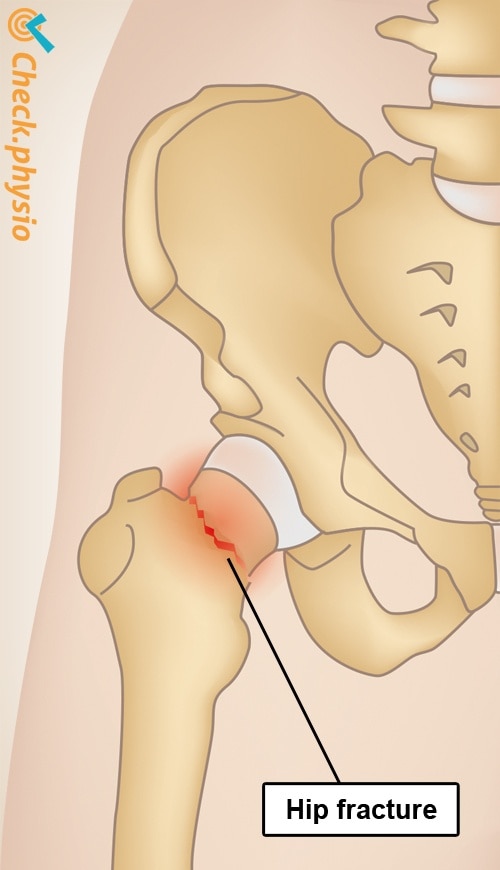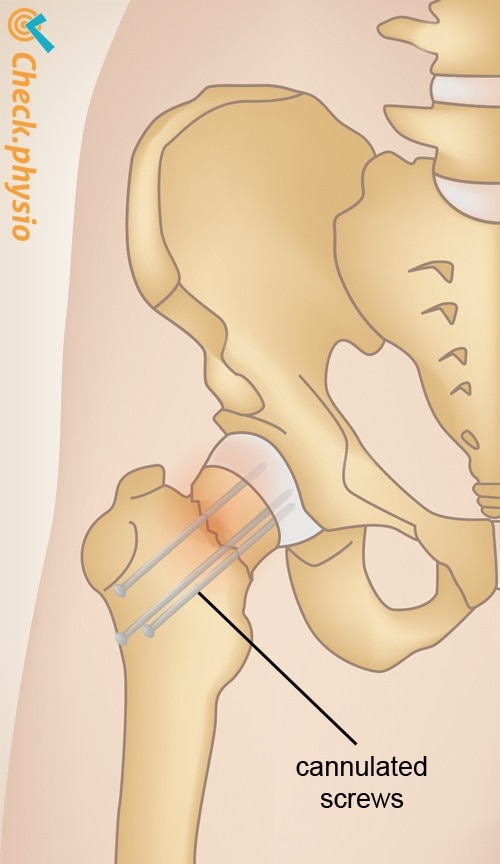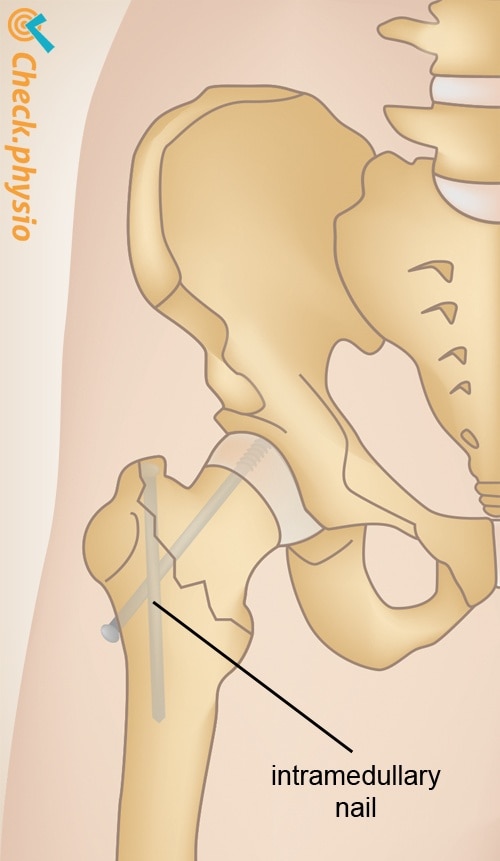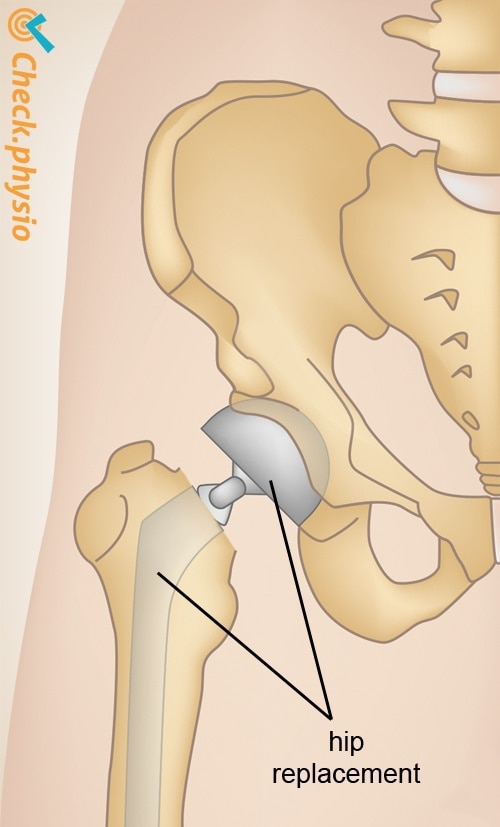Hip fracture
Broken hip / femoral nek fracture / collum femoris fracture
A hip fracture refers to a broken hip. This injury usually occurs after a fall and it is virtually impossible to bear weight on the affected leg. The fracture is treated surgically.

Hip fractures are very common. In the UK alone there are about 70,000 - 75,000 each year. The numbers are increasing year by year. Three quarters of the people with a broken hip are 75 years or older. Women are more likely to suffer a hip fracture than men.
Description of the condition
The medical term for the thigh bone is the 'femur'. In the case of a hip fracture, it is actually the femur that is broken. The break can occur in various grades. Sometimes a partial break will occur. In severe cases, the entire femoral head breaks off and the individual parts dislocate.
The hip fracture can have significant consequences, particularly for older patients. One in three patients dies in the first year after admission. The patients that do survive often loose their independence.
Cause and origin
A broken hip almost always occurs after an accident or fall. In the case of elderly people it is usually a fall. A high energy trauma is required to break the hip of younger patients. Examples include a fall from height or a frontal collision.
Signs & symptoms
- Pain in the hip after an accident or fall.
- It is virtually impossible to bear weight on the affected leg.
- Walking is impossible.
- The leg is rotated outwards.
- The affected leg can be shorter than the other leg, as a result of the femur shifting upward.
Diagnosis
The diagnosis is made based on the patient's story, the physical examination and X-rays. If the X-rays do not reveal a break, but a hip fracture is still suspected, an MRI scan or CT scan can clarify matters.
Treatment
The treatment is almost always surgical. The aim of the surgery is to secure the break in such a manner that the patient can bear weight on the leg again as soon as possible. Various techniques are applied depending on the type of break. Sometimes the decision is made to insert a hip prosthesis (artificial hip).
Rehabilitation takes place as soon as possible after the surgery. Extended bed rest can have a negative effect on the patient's health. This includes complications affecting the lungs, loss of muscle strength and reduced stamina. The physiotherapist will supervise exercise therapy, so that the patient can ultimately walk to the best of their ability.
Exercises
You can check your symptoms using the online physiotherapy check or make an appointment with a physiotherapy practice in your area.



References
Nationaal Kompas Volksgezondheid (2010). Heupfractuur: incidentie naar leeftijd en geslacht. Bilthoven: RIVM.
Nugteren, K. van & Winkel, D. (2007). Onderzoek en behandeling van de heup. Houten: Bohn Stafleu van Loghum.
Verhaar, J.A.N. & Linden, A.J. van der (2005). Orthopedie. Houten: Bohn Stafleu van Loghum.





